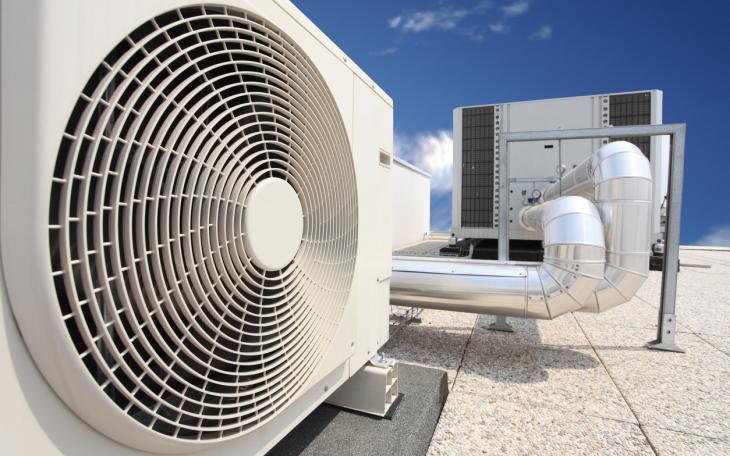Avoiding the road to air conditioning hell

Being in a cool, air conditioned office during a heatwave is heaven. But we take air conditioning for granted. Even though the modern glass buildings that many of us work in would be impossible without it.
The totem of 20th century progress, the skyscraper, was dependent on the invention of air conditioning as much as the elevator. From Dubai to London’s Nine Elms (AKA Dubai on Thames), to Shanghai, today’s glass and steel towers of the modernist, International Style have become the defining form for offices and, increasingly, residential architecture. But if you were to design from scratch a building to keep its occupants cool during a heatwave, a tall glass and steel building would be the antitheses. Steel and glass easily conduct heat from the outside while glass traps the sun’s radiation and upper floors cook as heat rises. Air conditioning is seen as a magic bullet to address these deficiencies.
So, what’s the problem with air conditioning? Unfettered, the energy demand from air conditioners will more than triple to 5.6 billion units by 2050, equal to the combined electricity output of the United State, the EU and Japan, according to an IEA report. Currently, a small fraction of the world’s electricity is generated from renewable resources while the transition to renewables is taking place at a far too slow pace. Furthermore, by dumping hot air into the streets, air conditioning boosts the urban heat island effect in cities. With heatwaves becoming more common as the world warms, demand for air conditioning and energy will rise, as will carbon dioxide emissions, helping to create a positive feedback loop to hell.
It gets worse. Air conditioning units contain a group of liquid refrigerant chemical compounds called hydrofluorocarbons (HFCs) and hydrochlorofluorocarbons (HCFCs). They have largely replaced chlorofluorocarbons (CFCs), which were outlawed in the 80s due to their rather nasty effect of destroying the atmosphere’s ozone layer that helps filter the sun’s harmful UV rays. These compounds are extremely potent greenhouse gases, absorbing radiation many times greater than carbon dioxide. They are also relatively inert and can linger in the atmosphere for up to 29 years.
Unfortunately, air conditioning units can leak when damaged. More importantly, thousands of air conditioning units are improperly disposed of at the end of their working lives, particularly in developing countries, resulting in their refrigerants venting into the atmosphere. Combined, this leakage is a not-insignificant contributor to global warming.
In recent years some progress has been made to the design of concrete, steel and glass commercial and residential buildings to reduce their dependence on air conditioning by preventing them getting hot in the first place. To limit solar gain – the term used to describe the heating of a building’s interior directly by the sun’s rays – architects are deploying solutions such as automated bris soleil, a large set of computer-controlled louvres screening windows, glass with layers to filter out the sun’s heat rays, and clever computer-controlled ventilation systems.
However, some architects are looking to the past for how to keep a building comfortably cool. Traditional, vernacular architecture that has evolved in hot climates over centuries is their inspiration. Around the Mediterranean, buildings with thick walls, small windows, external shutters and whitewash are the traditional form. The thick walls of brick or stone have high thermal mass, enabling them to absorb heat energy, while shutters and whitewash help reflect the sun’s energy. In Iran and Dubai, some of the old buildings have wind towers that help cool their occupants by deflecting moving air from outside. This idea has been adopted by architects, ZEDFactory, at a 2002 south London residential development that has become a local landmark with its array of rooftop mounted multicoloured wind tubes.
There is much to learn from the building principles of the past. But adapting them will present challenges. For example, having thick walls to give a high thermal mass goes against the trend to make buildings lighter and easier to build and if concrete is used to achieve mass this would generate further emissions.
With the UK posting its highest ever recorded temperature and fires sweeping across parts of Portugal and France, giving a portent of things to come, implementing the wisdom of past civilisations in their battle against heat has never been so urgent.









